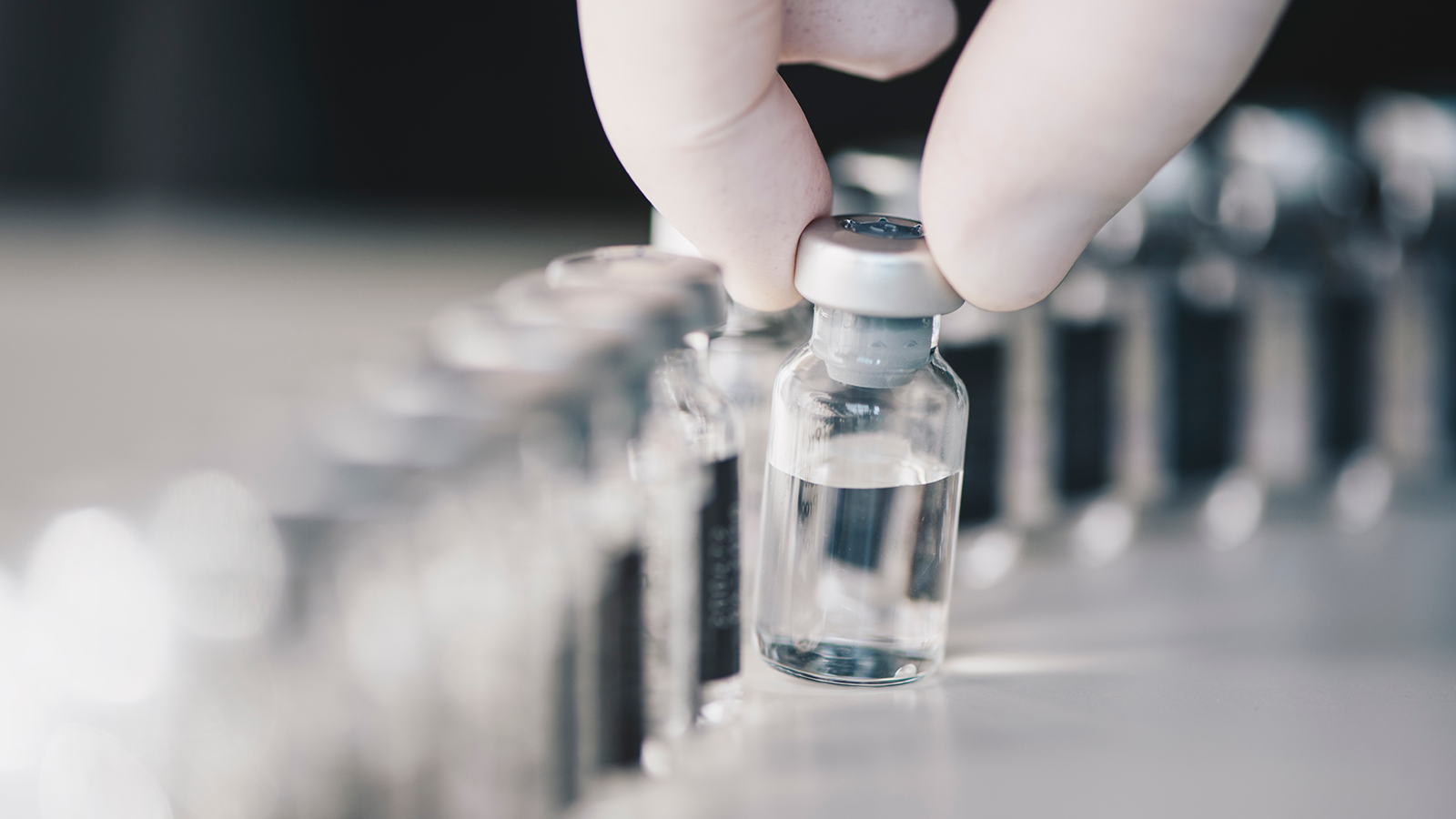Promising treatments for alopecia areata in the pipeline
Indications for Janus kinase inhibitors are expanding, as are safety concerns
Joshua Fredell, PharmD, Vice President and Head of PBM & Specialty Product Innovation

Specialty Pharmacy Pipeline: Drugs to Watch Report
Anticipated Launches | Q1 2023 - Q2 2023

Autoimmune diseases, including dermatologic conditions, are one of the main therapeutic categories driving drug trend. While not often discussed, one specific condition in this category is alopecia areata (AA). Usually diagnosed in childhood, AA is a condition in which the immune system attacks hair follicles, causing hair to fall out. There are three main types of AA; the most common is patchy alopecia areata, in which hair falls out in coin-sized patches on the scalp.
AA is not painful or life-threatening, but it can be psychologically traumatic and affect quality of life.1 Depression and anxiety were more prevalent in people diagnosed with AA, and AA patients are more likely to develop these conditions and to receive prescriptions for antidepressants.2
People with other autoimmune diseases such as psoriasis or vitiligo are more likely to get alopecia areata.3 AA is highly prevalent among adolescents; 20 percent of patients are younger than 16 years old.4 It is a polygenic disease, which means that both parents must pass certain genes to their children.5
Treatment options for alopecia areata include oral and topical therapies, as well as injections and phototherapy.6 Until mid-2022, there were no systemic treatments for the condition approved by the United States Food & Drug Administration (FDA).7
Costs and prevalence
Alopecia areata affects as many as 6.8 million people in the United States.8 Annual treatment costs range from $40 to $1,000 for topical therapies; $200 to $1,000 for corticosteroid injections; and $500 to $2,500 for platelet-rich plasma therapy. Light therapy also has been shown to be effective for treatment of AA and can cost $550 to $2,500.9, 10
New market entries to treat alopecia areata
Olumiant (baricitinib, Eli Lilly and Company) is a Janus kinase (JAK) inhibitor. Initially approved in 2018 for the treatment of rheumatoid arthritis (RA), Olumiant received Breakthrough Therapy designation for the AA indication; it was approved for adults in June 2022.11 The list price of Olumiant, according to the manufacturer, ranges from approximately $2,500 (2 mg dose) to $5,000 (4 mg dose) for a 30-day supply.12
Notable drugs in the pipeline
The robust drug pipeline includes two additional JAK inhibitors that have received Breakthrough Therapy designation:
- Ritlecitinib (Pfizer) is a new molecular entity for the treatment of alopecia areata in patients aged 12 years and older. It is pending FDA approval and expected to launch in the second quarter of 2023.
- Deuruxolitinib (Concert Pharmaceuticals) is a new molecular entity for the treatment of AA in adults that is currently in Phase III trials with an expected launch in the fourth quarter of 2023.
Three other new therapies with various modes of action are in Phase II development:
- Etrasimod (Pfizer) – sphingosine-1 phosphate receptor modulator
- Daxdilimab (Horizon/Viela Bio) – biologic: anti-inflammatory agent/monoclonal antibody
- Sotyktu (deucravacitinib, Bristol-Myers Squibb) – JAK inhibitor approved to treat moderate- to-severe plaque psoriasis. Alopecia areata would be a supplemental indication for this agent.
All of these drugs are oral therapies, with the exception of daxdilimab, which is administered via subcutaneous injection.
Balancing safety concerns with clinical benefits
Several of the drugs in the pipeline to treat alopecia areata are Janus kinase (JAK) inhibitors, which are a subset of the category known as DMARDs: disease-modifying anti-rheumatic drugs. Frequently used to treat inflammatory diseases such as RA, JAK inhibitors work by blocking the activity of certain enzymes to disrupt pathways that lead to inflammation.13 The clinical benefit of these therapies must be balanced against the safety concerns shared by the FDA, which has warned that "there is an increased risk of serious heart-related events such as heart attack or stroke, cancer, blood clots, and death" with the use of Xeljanz, a JAK inhibitor used to treat RA. Because of their similarities to Xeljanz, Olumiant and Rinvoq also are included in the warning.14
Ensuring clinically appropriate access to therapy
As the best partner to manage pharmacy benefits, CVS Health maintains constant surveillance and ensures day 1 utilization management criteria coverage. For these specialty drugs, the Specialty Guideline Management program (SGM) provides immediate coverage for clinically appropriate access to drug therapy.
Specialty Guideline Management is a program supported by seasoned health care professionals including physicians, pharmacists, nurses, specialists, and others. SGM provides the most clinically appropriate stringent criteria for access to drug therapy. It is the hallmark of CVS specialty trend management.
SGM immediately activates day 1 utilization criteria, as well as managing ongoing maintenance of criteria as new agents enter the market, labeling changes occur, safety updates are issued, and so forth.
Alopecia areata is a serious autoimmune disease. Although it is rare, some clients may have coverage objectives that do not include coverage of AA. To meet all of our clients' plan coverage goals, CVS offers two standard criteria: one that covers all indications and one that limits indications and excludes coverage for AA.
This article contains references to brand-name prescription drugs that are trademarks or registered trademarks of pharmaceutical manufacturers not affiliated with CVS Health.
©2023 CVS Health. All rights reserved. Ref. 1670460 011922


